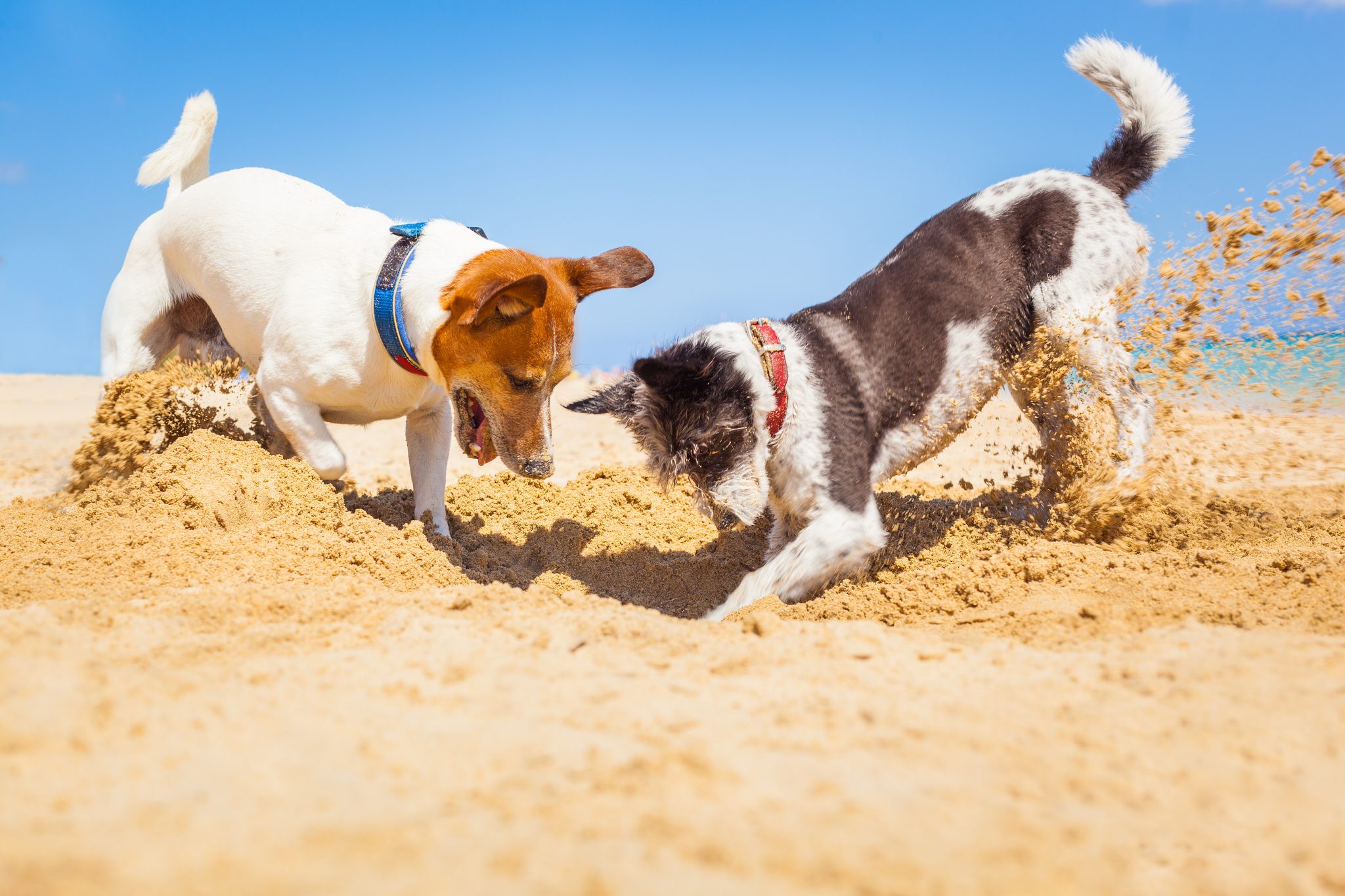Joint health in dogs and cats is a major concern for pet owners, as problems with their pets’ ligaments, cartilage, and surrounding bone can seriously impact their quality of life. Arthritis is a common health problem that impedes mobility, and causes chronic pain. Unfortunately, affected pets are forced to watch from the sidelines when they would rather be actively involved with family activities. And, joint problems can make the simplest tasks, such as rising from a nap or navigating stairs, a major feat. In addition to affecting your dog or cat’s health and wellbeing, joint disease can take a serious toll on your wallet. However, you can prevent joint disease in your pet, or at the least, minimize their risk of developing a joint condition.
you can prevent joint disease in your pet, or at least, minimize their risk of developing a joint condition
How can a pet’s joints be damaged?
In a healthy joint, cartilage acts as a cushion, to allow the joint to move smoothly through its full range of motion without the bones rubbing against each other. When the joint becomes damaged, such as with arthritis, the joint cartilage thins, fluid accumulates in the joint, and bone spurs form.
Osteoarthritis is the most common arthritis form in dogs, affecting approximately a quarter of the canine population at some point in their lifetime.[1] Reaching an accurate number of osteoarthritis cases in cats is more difficult, but X-rays show osteoarthritis in up to 90 percent of cats, although only an estimated 50 percent of these cats are clinically impaired with joint pain.[2]

Since osteoarthritis is one of the most common forms of joint disease in pets, let’s look at its effect on their joints, and overall health and well-being. This disease is characterized by:
- Joint cartilage loss
- Joint capsule thickening
- New bone formation around the joint
- Muscle atrophy
- Pain
- Decreased range of motion and mobility
most pets are relatively stoic and hide their pain until joint damage has progressed
Arthritis can be caused by injury, infection, the immune system, degenerative diseases, or conformational disorders. The most common arthritis type is osteoarthritis (i.e., degenerative joint disease), which is induced by the degenerative aging process, often in combination with conformational diseases like hip dysplasia, elbow dysplasia, intervertebral disc disease, and medial patellar luxation. In addition to secondary developmental and aging changes, osteoarthritis can occur because of obesity, genetics, gender, vigorous exercise, diet, and breed size.
What are joint pain signs in pets?
You would think you would easily spot your pet’s joint pain, but the signs are not always an obvious limp. In fact, most pets are relatively stoic and hide their pain until joint damage has progressed. Be on the lookout for the following signs that your pet is struggling with joint issues:
- Stiffness after exercising
- Reduced mobility and range of motion
- Muscle atrophy
- Joint swelling
- Difficulty rising, jumping on furniture, or climbing stairs
- Irritable behavior
- Decreased activity
- Excessive licking of affected joints
- Difficulty posturing to urinate or defecate
- Inappropriate elimination
- Weight gain
- Pain when petted or touched
- Appetite loss

Keep in mind that cats are less likely than their canine counterparts to display joint disease signs, in part because of their prey-like nature. They may exhibit an unkempt appearance, reluctance to jump, change in landing position when jumping down, activity reduction, or aggression.
Many of these signs are subtle, or chalked up to normal aging changes, but if you notice your pet becoming less active, sleeping more, and not wanting to play as much, they may be suffering from joint disease.
How can you support your pet’s joint health?
You can support your pet’s joint health in many ways before turning to prescription medications or surgery, although those therapies are often necessary to ensure your furry friend has the best quality of life. To promote good joint health in your pet, try the following methods:
By keeping your pet active from a young age with low-impact exercises, you can help them maintain healthy muscle mass, reduce fat, and achieve an ideal weight
- Weight management — As pets age, their metabolism slows, and they gain weight, which can be compounded by various diseases that affect their endocrine system and mobility. Each additional pound your pet carries significantly impacts their joints, plus, since fat is itself an inflammatory substance, joint inflammation is further increased. Helping your pet maintain a healthy weight and body condition goes a long way toward keeping their joints healthy.
- Low-impact exercise — Vigorous exercise, like games of fetch and running, can cause excessive wear and tear on your pet’s joints. Stick to low-impact exercise, like swimming and walking, to help maintain your pet’s weight, build muscle mass, and promote healthy joints.
- Appropriate diet — No matter your pet’s life stage, ensure you feed them the appropriate diet. Large-breed dogs should be fed a large-breed diet, while older pets should be fed a senior pet formula. If your pet is a breed prone to developing joint conditions, you may consider feeding them a joint-protective diet before they show disease signs. Speak to your veterinarian about the best diet for your pet’s joint health before switching foods.
- Joint supplements — Joint supplements are best started before your pet exhibits joint damage signs, but they can still be beneficial for preserving cartilage and reducing inflammation after an issue has developed. Ingredients like chondroitin, glucosamine, methylsulfonylmethane (MSM), a balance of the right omega-3 fatty acids, avocado soybean unsaponifiables (ASUs), and green-shelled mussels have been proven effective in supporting joint health, so search for cat– or dog-specific supplements that contain these ingredients.
- Accessibility aids — Joints take a serious beating when your pet jumps onto or off furniture, so provide ramps or steps to prevent the impact. Those hardwood floors may look gorgeous, but if your pet slips and slides on their slick surface, place carpet runners to provide traction. Elevated food and water bowls will help your pet avoid bending down to eat and drink. Low-sided litter boxes will be easier for your cat to navigate.
- Orthopedic bedding — Firm, rather than fluffy, bedding is a better option, because your pet will not flounder around in the stuffing or compact the bedding to the hard floor, and negate any joint cushioning effects.

How can you prevent joint damage in your pet?
The pillars of pet joint health support include weight management, low-impact activity, and cartilage protection. Obesity is a key risk factor for joint disease development for a multitude of reasons, including increasing pressure on the joints, and producing inflammatory substances. By keeping your pet active from a young age with low-impact exercises, you can help them maintain healthy muscle mass, reduce fat, and achieve an ideal weight.
In addition, you can incorporate joint supplements from an early age, to promote joint health. Joint care supplements added to your pet’s regimen may promote increased joint lubrication, better joint health, less cartilage damage, and increased pain control.
Before making changes to your pet’s diet, exercise, or supplement plan, contact your veterinarian. They’ll be able to recommend the best products and activities for your pet’s specific joint health needs, and help keep them happy and healthy for years to come.
Sources:
[1] American College of Veterinary Surgeons (2021). Osteoarthritis in Dogs. Accessed October 20, 2021. https://www.acvs.org/small-animal/osteoarthritis-in-dogs
[2] American College of Veterinary Surgeons (2021). Osteoarthritis in Cats. Accessed October 20, 2021. https://www.acvs.org/small-animal/osteoarthritis-in-cats

